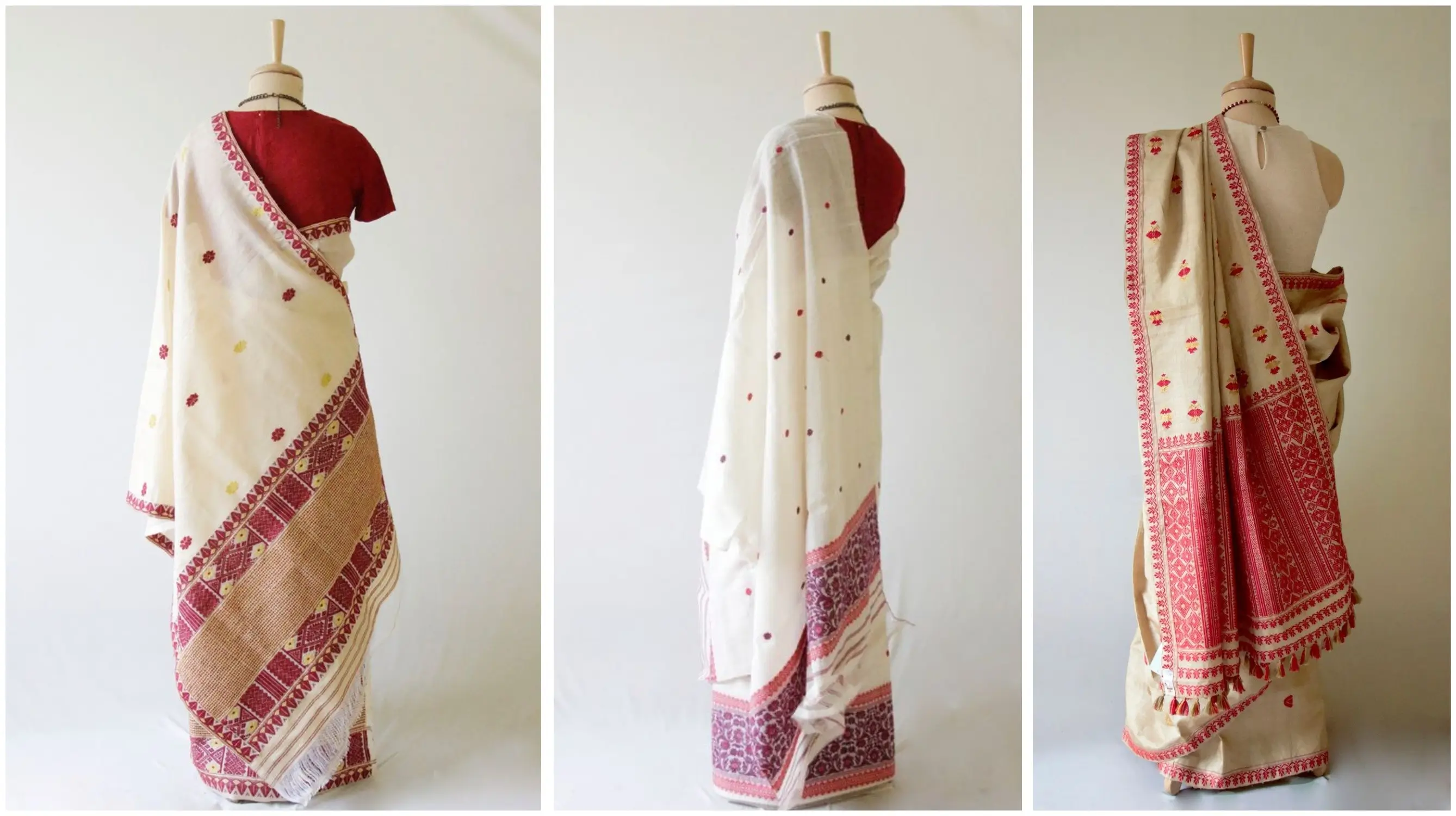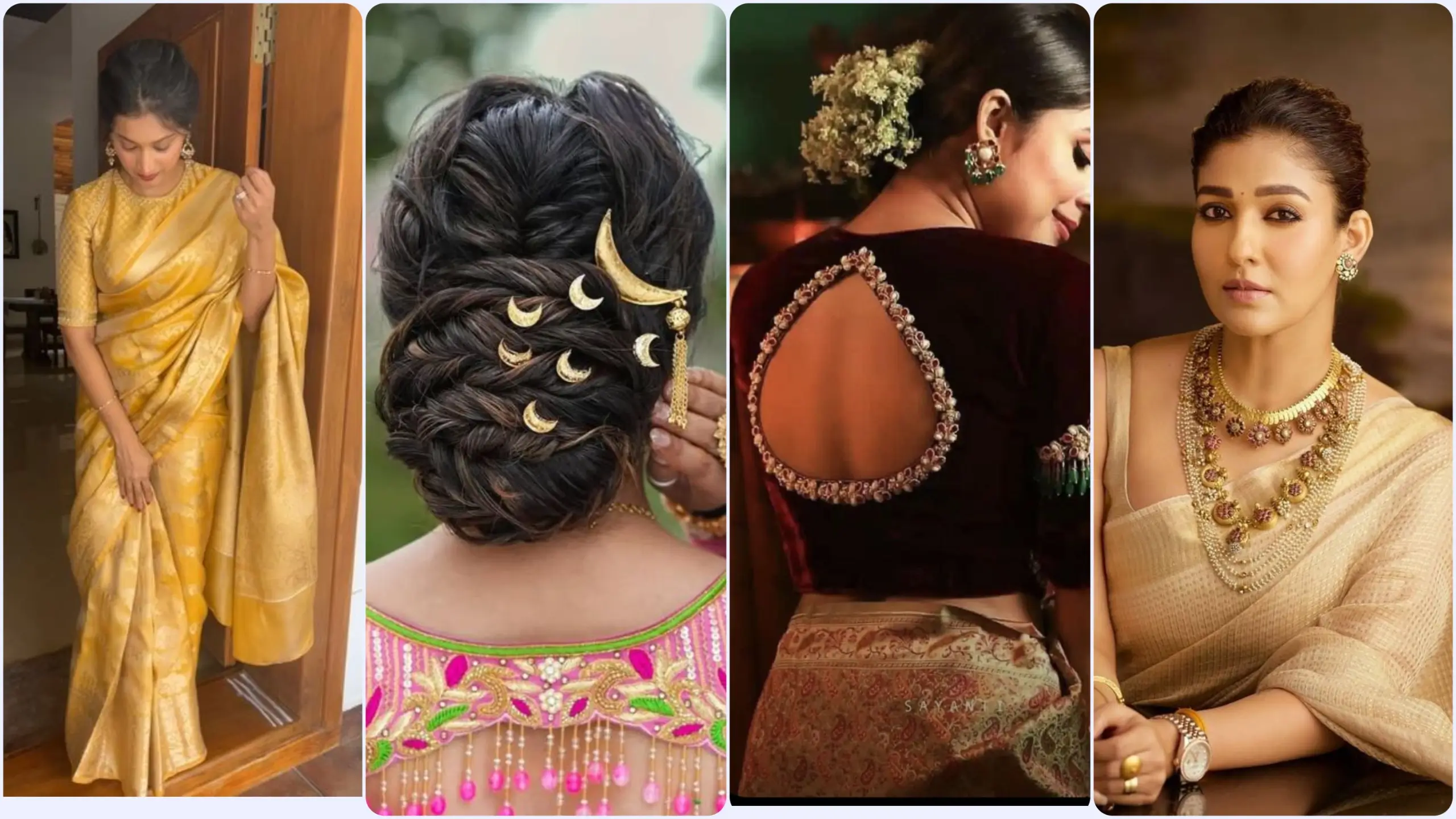Ever wondered how an elegant Banarasi saree is made? How do the artisans create each design and pattern without using any machines? If you haven't yet, then now is the time to enrich yourself with valuable insights into the weaving techniques the weavers use. These sarees originated from Banaras, where the city is famous for handloom textiles and sarees. Their top-notch textiles are produced using eclectic threads and materials which are appreciated across the globe. They hold a rich history that dates back several centuries, and the weaving and handcrafting practices have evolved into what they are today.
The Banarasi sarees woven earlier were crafted from gold and silver zari borders and were paired with heavy ornaments to make them look luxurious and cultured. The intrinsic floral designs with eye-pleasing motifs like kalga and bel buti were a big part of the earlier look of the Banarasi sarees. These sarees were then transitioned into 20th-century sarees, which we are well aware of. In this blog post, we will dive deep into detailed insights into the evolution of Banrasu sarees over the years. Here is everything you need to know about the evolution of your favourite sarees of all time!
The origin of Banarasi sarees in the early Mughal era
The early history of Banarasi Sarees can be dated back to the Mughal era in the 16th century (100 to 300 BC) when the Mughal emperors promoted the textile industry in India. The delicate art of weaving was brought to Varanasi by Persian weavers in this evolving era. The weavers of Banaras quickly learned the art of weaving and began crafting the stunning Banarasi sarees. These sarees were in high demand by the rich and elite class people or simply the queens of the Mughal era.
If you ever wondered about how the handloom Banarasi saree looked like, they were heavy and carved with motifs all over. They were made of pure silk, and the intricate floral and paisley motifs of the Mughal era inspired the designs. These sarees were woven with zari (metallic thread) and had a luxurious sheen, making them highly prized. The weavers used traditional handlooms to weave these sarees, and the process was slow and labour-intensive. But this time-taking weaving process proved to be a blessing for the weavers as they were employed in the weaving industries for the time being.
Techniques used to weave Banarasi sarees in the 16th century
The weavers used many weaving techniques during the Mughal era that led to the jaw-dropping designs of the Banarasi Saree. Some of the famous ones are mentioned below:
- Kadhwa- This technique is also known as Kadhua and is one of the complex techniques of crafting Banarasi Sarees. Each delicate motif is woven separately in this technique, taking more time compared to other techniques.
- Cutwork- Cutwork technique requires the weaver to weave the motifs together, taking lesser time to complete. Once the saree is woven, the silk thread bunch on the back are cut down. The sarees from this technique can be crafted in eclectic patterns and designs.
- Meenakari- Meenakari weaving technique is the oldest weaving technique that uses more than one colour of resham threads. This technique can be crafted in both kadhwa and cutwork styles.
- Kadiyal- Kadiyal technique is simply used to accumulate silk threads of various colours to craft the border of the Banarasi saree in contrast with the skin tone. This process also includes dyeing and arranging the wrap.
- Tanchoi- Tachoi is the most delicate and intricate weaving technique of using multiple warp threads, mainly of multi colours. In this technique, several peacocks, flowers and parrots are carved as the design on the saree.
Point of transition from 16th century to 20th century
Over time, the Banarasi saree evolved to incorporate new designs and styles. The major transition happened in the 18th and 19th centuries when these sarees began to feature more geometric and figurative designs inspired by the art of the Banaras School of Painting. The weavers also tried making these sarees affordable by using a mix of silk and cotton threads, making these sarees lightweight and comfortable. This was done to extend the accessibility of these sarees to more women in India.
In the 20th century, the Banarasi saree underwent another transformation as the demand for lightweight and easy-to-wear sarees increased. These sarees featured intricate designs and patterns, often combining zari and thread work.
Present-day evolution of Banarasi Sarees
Today, the Banarasi saree continues to be an important part of Indian culture and fashion. Any cultured event is incomplete without showing up in these blissfully designed handloom sarees. The weaving and handcrafting practices have become more organised, with weavers using advanced techniques and technology to produce high-quality sarees. The sarees are made of various fabrics, including silk, cotton, and a mix of both. The designs range from traditional floral and paisley motifs to modern geometric and abstract patterns.
In recent times, technological advancement has led to the advent of power looms that have threatened the production of handloom Banarasi beauties. These power loom machines are fast and cost-saving. But the ardent lover of handloom sarees will always choose them over the power looms as the quality and uniqueness of a handloom saree are hard to replicate.
The Banarasi saree weaving and handcrafting practices have come long since their origins in the Mughal era. Today, these sarees symbolise India's rich cultural heritage and are prized for their beauty, craftsmanship, and timeless elegance.
Summing up
The mesmerising Banarasi sarees have come a long way back from the Mughal era to the present day. They originated from the holy city of Varanasi, where these sarees were woven for the Mughal queens and other rich and elite groups. The Banarasi sarees were heavy and entirely paisley motifs crafted during those times. But later, towards the transition in the 20th century, these sarees underwent significant changes.
They were crafted with several cotton and silk threads to make them lightweight and comfortable to be worn by many women of other classes. The Banarasi saree we know today is a perfect blend of modern and traditional saree. The weaving process is more organised and committed to delivering quality, uniqueness and craftsmanship!



.webp)


Comments
Leave A Comment: